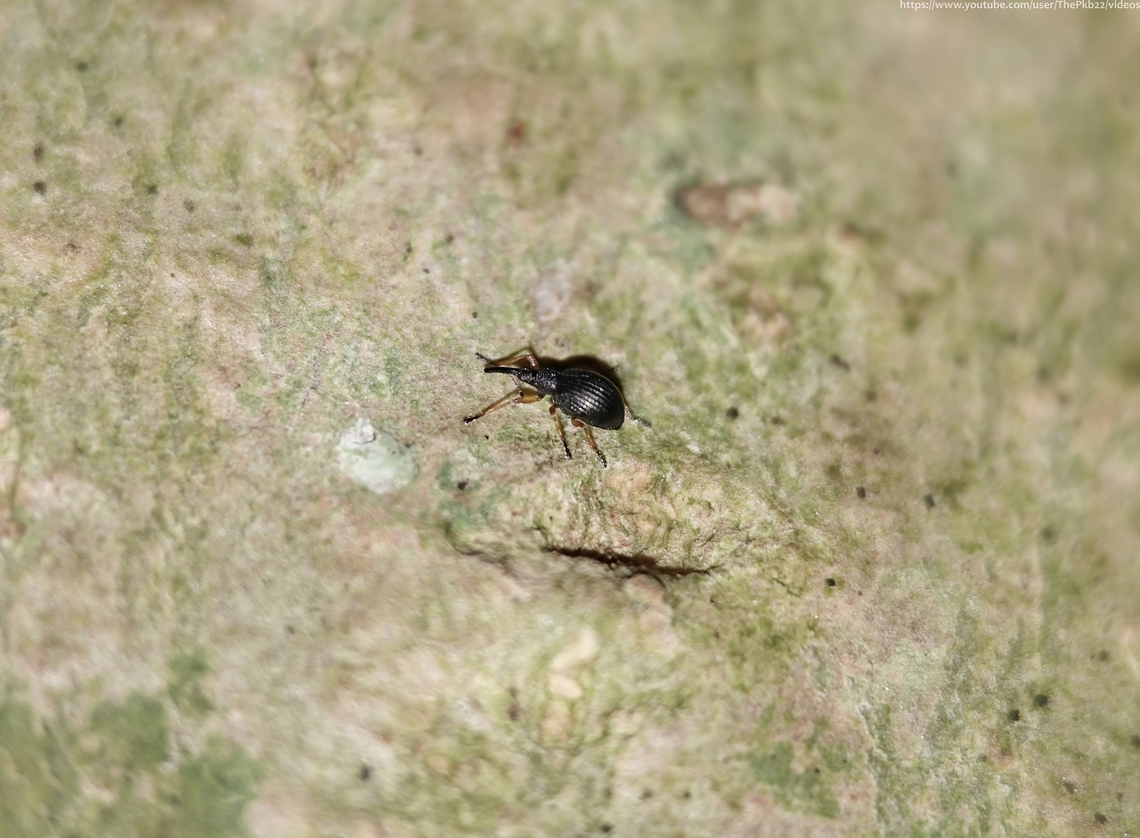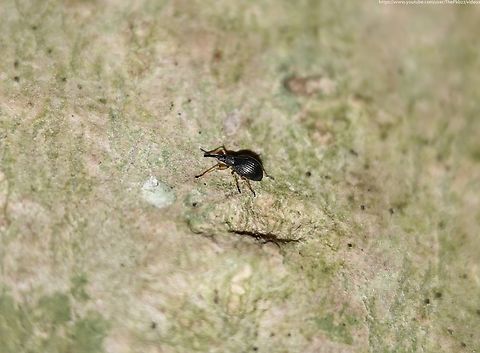 PromotedSpecies introCountry intro
PromotedSpecies introCountry intro
White Clover Seed Weevil (Protapion fulvipes)
This is one of those "common" species one is unlikely to find unless paying close attention to what that speck might be on that pice of vegetation or in this case, bark, or perhaps do a net sweep for insects?
P. fulvipes is losely associated with various species of clover, but especially Trifolium repens L. (White clover) as the name suggests.
At approx. 2mm in length this species can be separated from other Protapion species by the pale-coloured tibiae and similarly pale appearance of the base segments of the antennae.
What appears to be a black body in the photo is in fact a dark shade of green.
There are around 50 species in the genus of which 12 occur in the UK.
Adults can be found all year, with numbers peaking in the spring where they can usually be found in the developing flower buds of host species where eggs are laid and, about 10 days later, larvae will hatch and feed.
Around 30 days later, after 10 days of pupation adults will emerge but remain on the host plant until the autumn when they fly, sometimes in large numbers, to a different tree or shrub, before most of them overwinter in leaf litter.


comments (4)